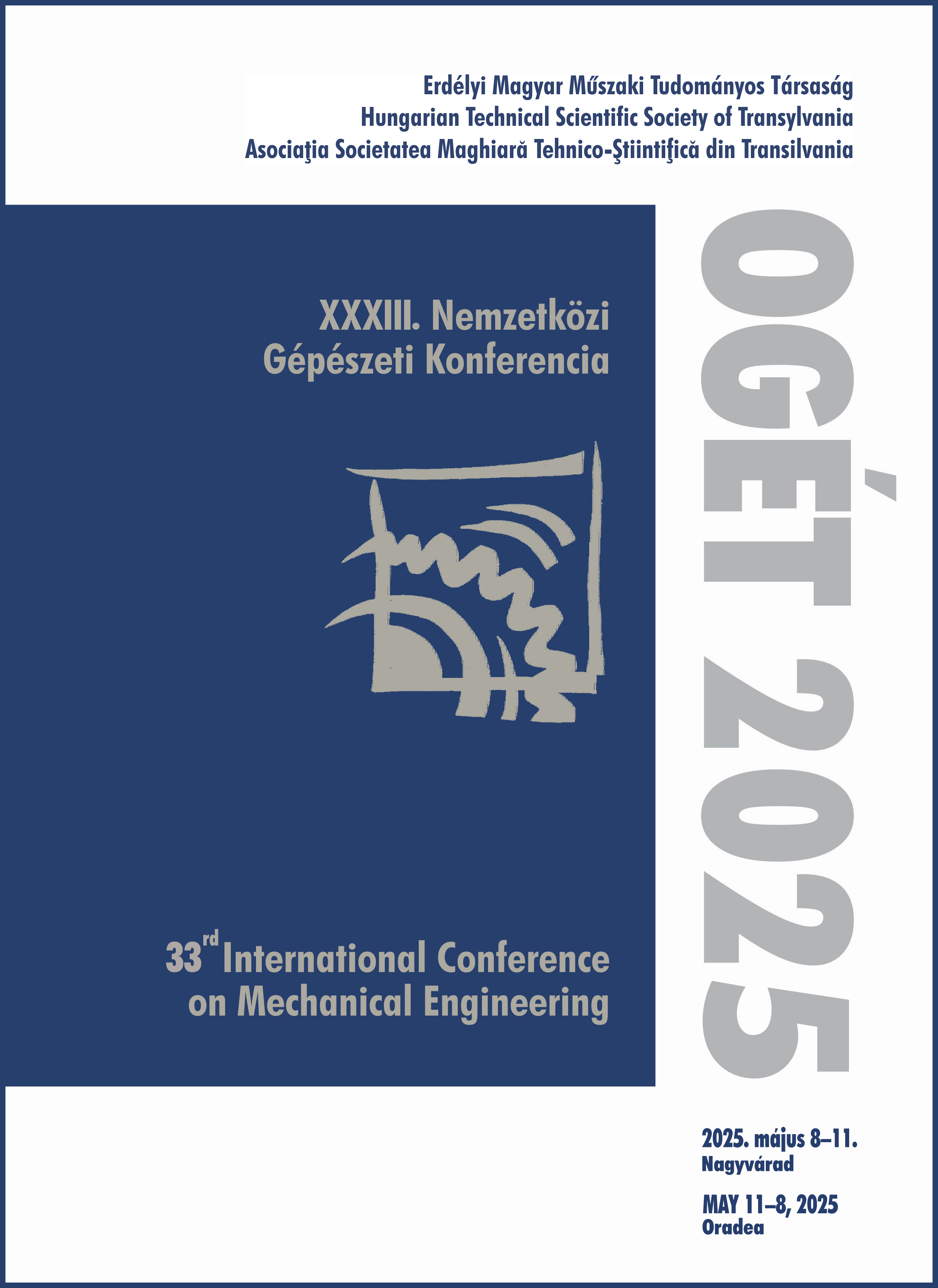Biológiailag inspirált, önélező forgácsolási technológia fejlesztése és numerikus vizsgálata
Design and numerical analysis of a bio-inspired cutting technology
Keywords:
bio-inspired, tool wear, orthogonal cutting, self-sharpening, numerical simulation, /, biológiailag inspirált, szerszámkopás, ortogonális forgácsolás, önélezés, numerikus szimulációAbstract
Nature has inspired many different technical solutions, making it an area of research that is becoming increasingly relevant. In nature, the teeth and claws of certain organisms act as self-sharpening mechanisms, and this research aims to develop and analyse self-sharpening technology inspired by these mechanisms. The investigated self-edging mechanisms were simulated numerically in ANSYS LS-Dyna software. The results of the research have brought us closer to a concept of a self- sharpening technology that is worth testing as a prototype because of its potential.
Kivonat
A természet sok esetben inspirált már különböző műszaki megoldásokat, ennek köszönhetően egy egyre népszerűbb kutatási terület. A természetben bizonyos élőlények fogazata, karmai önélező mechanizmusokként működnek, a kutatás célja az ilyen mechanizmusok által inspirált önélező technológia fejlesztése és elemzése. A vizsgált önélező mechanizmusok numerikus szimulációkkal lettek imitálva az ANSYS LS-Dyna szoftverben. A kutatás eredményei alapján közelebb kerültünk egy olyan önélező technológiai koncepcióhoz, melyet már érdemes lehet prototípusként tesztelni, annak potenciálja miatt.
References
G. Byrne, D. Dimitrov, L. Monostori, R. Teti, F. van Houten, és R. Wertheim, „Biologicalisation: Biological transformation in manufacturing”, CIRP Journal of Manufacturing Science and Technology, köt. 21, o. 1–32, máj. 2018, doi: 10.1016/j.cirpj.2018.03.003.
„English”. Elérés: 2024. november 7. [Online]. Elérhető: https://www.biointelligentmanufacturing.com/en.html
K. Wegener és mtsai., „Biologicalisation in manufacturing – Current state and future trends”, CIRP Annals, köt. 72, sz. 2, o. 781–807, jan. 2023, doi: 10.1016/j.cirp.2023.05.005.
R. Miehe és mtsai., „The biological transformation of industrial manufacturing – Technologies, status and scenarios for a sustainable future of the German manufacturing industry”, Journal of Manufacturing Systems, köt. 54, o. 50–61, jan. 2020, doi: 10.1016/j.jmsy.2019.11.006.
A. Malshe, K. Rajurkar, A. Samant, H. N. Hansen, S. Bapat, és W. Jiang, „Bio-inspired functional surfaces for advanced applications”, CIRP Annals, köt. 62, sz. 2, o. 607–628, jan. 2013, doi: 10.1016/j.cirp.2013.05.008.
M. A. Meyers, A. Y. M. Lin, Y. S. Lin, E. A. Olevsky, és S. Georgalis, „The cutting edge: Sharp biological materials”, JOM, köt. 60, sz. 3, o. 19–24, márc. 2008, doi: 10.1007/s11837-008-0027-x.
J. F. Archard, W. Hirst, és T. E. Allibone, „The wear of metals under unlubricated conditions”, Proceedings of the Royal Society of London. Series A. Mathematical and Physical Sciences, köt. 236, sz. 1206, o. 397–410, jan. 1997, doi: 10.1098/rspa.1956.0144.
O. Pantalé, J.-L. Bacaria, O. Dalverny, R. Rakotomalala, és S. Caperaa, „2D and 3D numerical models of metal cutting with damage effects”, Computer Methods in Applied Mechanics and Engineering, köt. 193, sz. 39, o. 4383–4399, okt. 2004, doi: 10.1016/j.cma.2003.12.062.
„Titanium Carbonitride (TiCN) PVD Coating”. Elérés: 2024. november 8. [Online]. Elérhető: https://www.matweb.com/search/datasheet.aspx?MatGUID=5ffb257a8cc74b69a140046a34b5d61c


